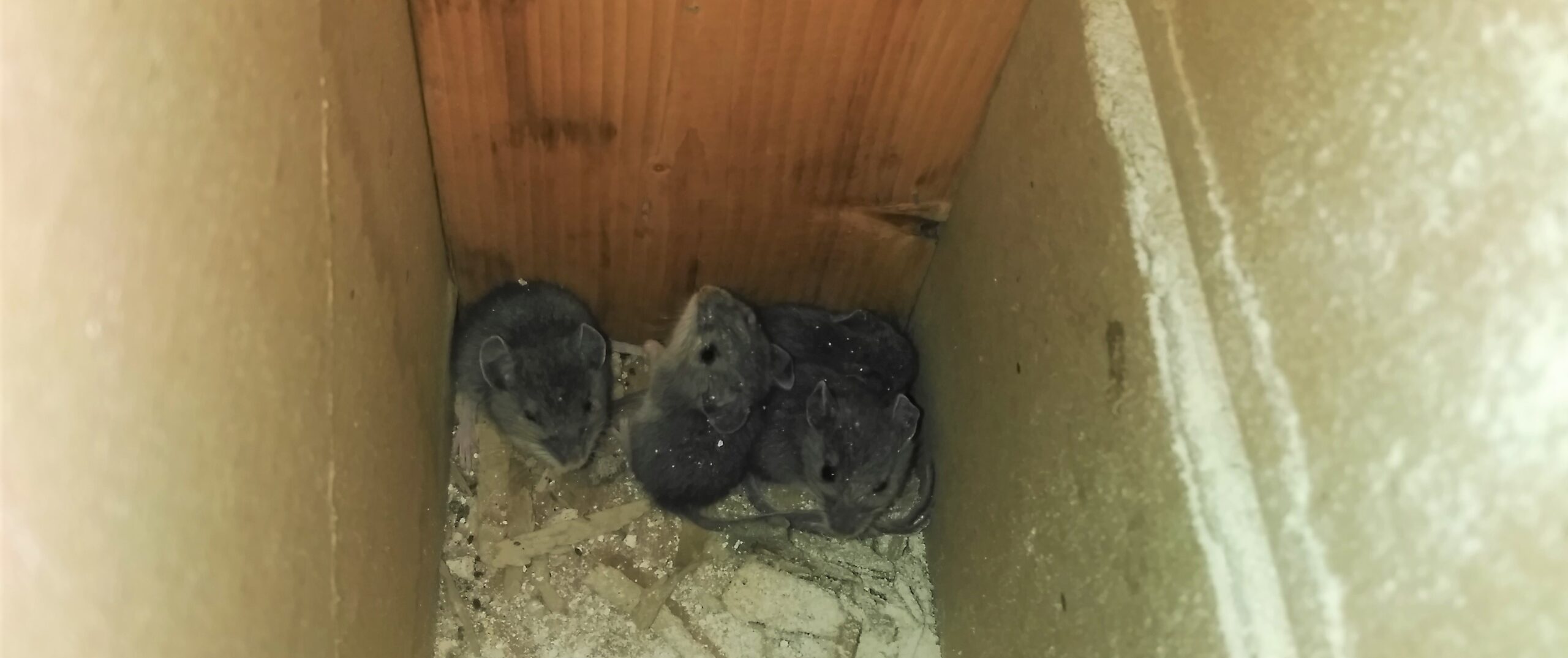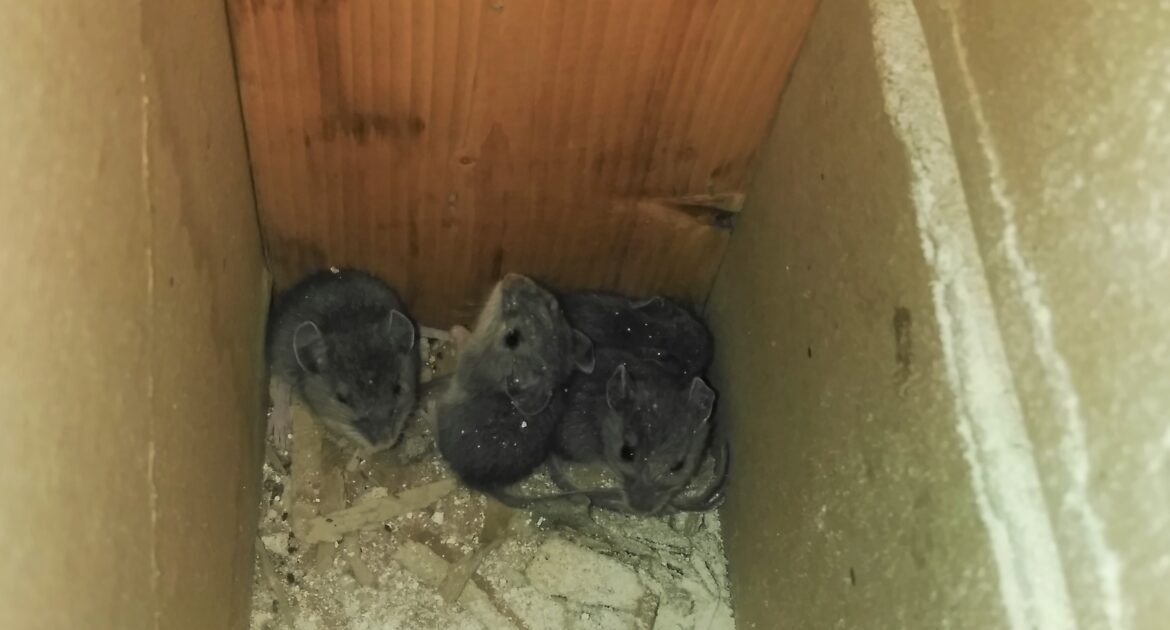Have you been hearing strange noises coming from your walls lately? It’s not a pleasant thought, but those sounds could be caused by mice. Knowing how to tell if mice are the source of the problem is the first step to keeping your home safe and comfortable. There are several key signs of signs of mice in your walls, from scratching noises to physical evidence they leave behind. By paying attention to these details, you can identify wall noises and detect a mouse infestation early before the problem gets worse.
Hearing activity in your walls can be unsettling, and it’s important to act quickly if you suspect mice. These small animals can cause a lot of damage and even pose health risks. But how exactly can you tell if it’s mice making those noises? We’ll walk you through the most common signs and teach you how to identify mouse activity in your walls. Trust our team at Skedaddle Humane Wildlife Control in Ottawa to provide the expertise needed to address the issue effectively and humanely.
What Do the Noises in Your Walls Mean?
If you’ve been hearing noises at night when the house is quiet, this is often one of the first clues that mice might be present. Mice are nocturnal, so they’re most active when we’re winding down. But how can you know for sure it’s mice and not something else, like squirrels or plumbing issues? Pay attention to the following details:
- Scratching and Scurrying Sounds: Mice are tiny, and their movements create light, fast scratches or scurrying noises. These usually come from the same area repeatedly, as mice tend to stick close to their nests.
- Chewing Noises: If you hear faint gnawing, mice could be chewing through wood, drywall, or even wiring as they build their nests and search for food.
Listening closely to the patterns and types of sounds can help identify wall noises that point to mice. Their activity is often erratic but centred in one place.
More Mice in Your Walls Signs
Beyond the noises, there are other clear signs that mice might be living inside your walls. By looking for these signs, you’ll be able to detect a mouse infestation with confidence.
Droppings and Urine Stains
Mice leave small, dark droppings near where they travel or nest. These are often found near baseboards, in corners, or under furniture. You might also notice faint yellow-brown stains caused by urine, which mice use to mark their territory.
Nibble Marks on Food and Packaging
If you start seeing bite marks on food packaging, crumbs left in unusual places, or food that’s been chewed through, mice are likely in your home. Pay special attention to pantries and other areas where food is stored.
Holes in Walls or Floors
Mice can squeeze through incredibly small openings, and they often chew holes in your walls or around flooring to create these entrances. Keep an eye out for newly formed gaps along the edges of rooms or where walls meet the floors.
Tracks and Smudges
Mice tend to travel along the same paths, leaving behind greasy smudges or footprints. These are typically found along walls or in dusty areas. If you’re not sure, sprinkle a bit of flour near suspected entry points and check for tracks the next day.
Unusual, Musty Smell
A strong, musky odour is another sign of mice. Their urine, droppings, and nesting materials can create this smell, which is usually strongest in enclosed spaces like walls or cupboards.
Nesting Materials
Mice use shredded paper, fabric, and other soft materials to create nests. If you find small piles of these materials hidden in corners or behind furniture, you’re likely dealing with mice in your home.
Why You Should Act Fast
Ignoring the signs of a mice infestation can lead to bigger problems. Mice can cause significant damage to your home by chewing through insulation, drywall, wiring, and even furniture. Unfortunately, their chewing isn’t just destructive; it’s hazardous. Damaged electrical wiring caused by mice is a common fire risk.
Mice also carry germs and diseases, posing health risks to your family and pets. Bacteria like Salmonella can be spread through their droppings, while inhaling dust from nests can cause respiratory problems. Catching an infestation early is critical to keeping your home safe and healthy.
What Makes Mice Hide in Your Walls?
Walls provide mice with a safe, warm, and quiet place to nest. They’re out of sight, away from predators, and close to food sources. Mice can gain access to your walls through small gaps, vents, or foundation cracks. Once inside, they can reproduce quickly, making a minor issue turn into a bigger infestation in no time.
If you’re hearing wall noises, remember that mice are social and will live in groups. That means there’s rarely just one mouse behind those sounds. Acting promptly is key to stopping the problem from growing.
How Skedaddle Helps with Mice Infestations
When it comes to removing mice from your walls, we believe in doing it right the first time. Our team at Skedaddle Humane Wildlife Control in Ottawa uses a proven process that focuses on humane and effective solutions. We start by inspecting your home to confirm the presence of mice and locate their entry points.
One of our most effective tools is the one-way door system. This allows mice to leave your home safely but blocks them from getting back in. We also identify and seal all potential entry points to ensure the problem doesn’t return.
With our proven methods, you won’t have to worry about ineffective traps or risky DIY attempts. We make the process simple and stress-free, so you can get back to enjoying your home as it should be.
Preventing Future Infestations
After removing mice, the next step is preventing them from coming back. Here are some practical tips to make your home less attractive to mice:
- Seal Up Cracks and Holes: Even the smallest openings can provide access. Use caulking or steel wool to seal gaps around pipes, doors, and windows.
- Store Food Securely: Use airtight containers for pantry items and remember to clean up crumbs and spills promptly.
- Keep Your Home Clean: Vacuum regularly and don’t leave clutter lying around, as it can provide hiding spots for mice.
- Trim Vegetation Outside: Overgrown shrubs and trees near your home make it easy for mice to climb and find their way inside.
By following these steps and staying vigilant, you’ll reduce the chances of dealing with another infestation in the future.
Act Now to Protect Your Home
Hearing noises in your walls? Wondering how to know if it’s mice? Detecting the signs early can save you from serious damage and stress. Look for key mice in your walls signs like scratching sounds, droppings, and chew marks, and act quickly if you notice them.
At Skedaddle Humane Wildlife Control in Ottawa, we have the expertise to resolve mice infestations and prevent them from returning. Don’t wait until the problem worsens. Request an estimate today and take the first step toward a mice-free home.




